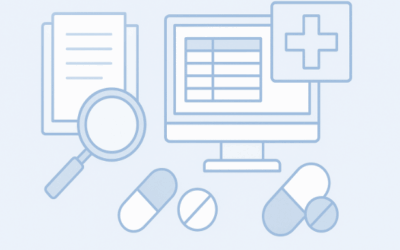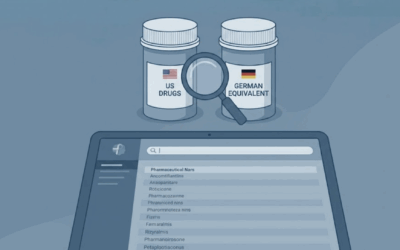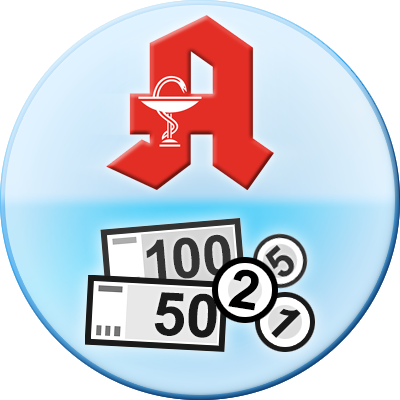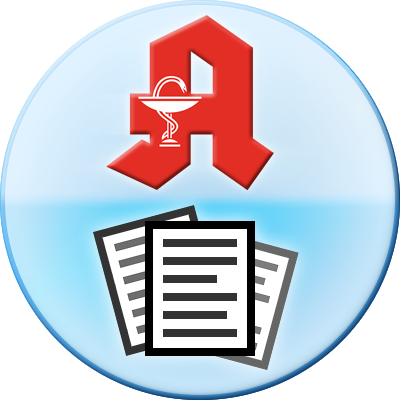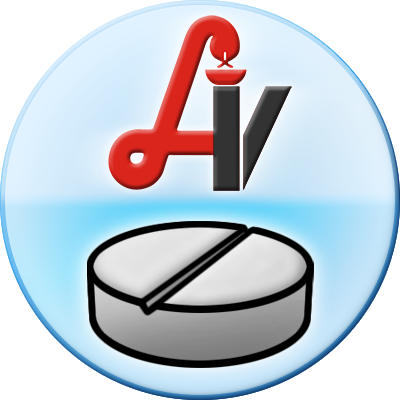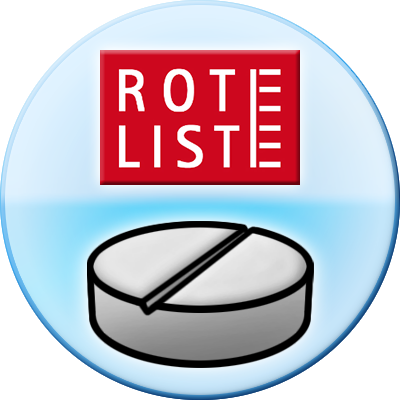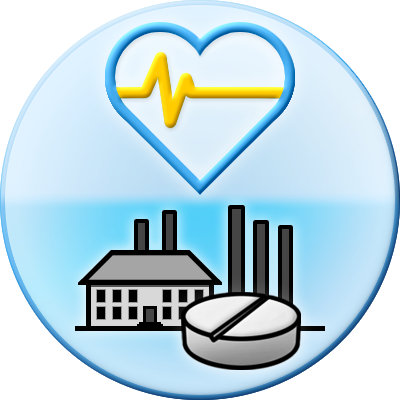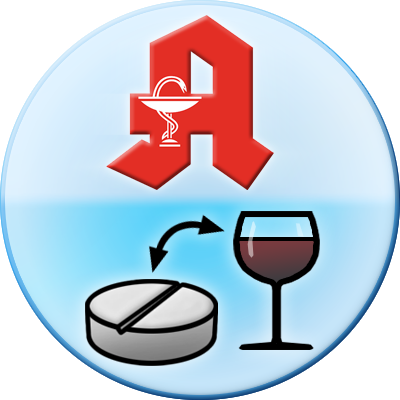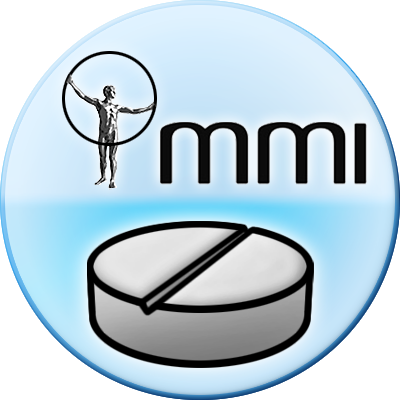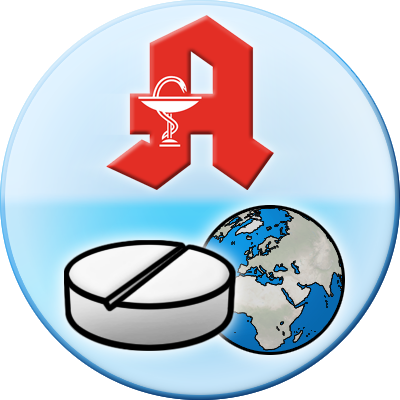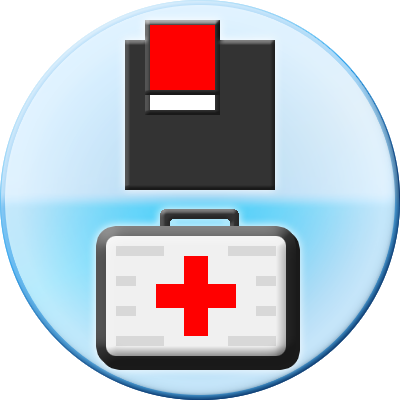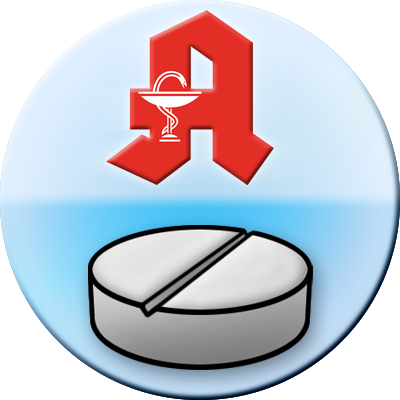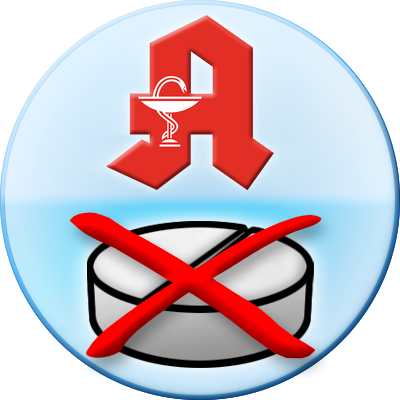Executive Summary
The global pharmaceutical ecosystem is currently navigating a period of unprecedented complexity. At the epicenter of this environment—balancing the rigorous demands of regulatory compliance, the clinical needs of healthcare professionals, and the safety of patients—stands a single document: the Summary of Product Characteristics (SmPC). Far more than a mere bureaucratic requirement for Marketing Authorisation (MA), the SmPC serves as the definitive “source of truth” for every medicinal product authorized within the European Union. It dictates the legal boundaries of pharmaceutical promotion, establishes the parameters for safe prescribing, and acts as the foundational data source for all downstream patient information.
This comprehensive research report offers an exhaustive analysis of the SmPC, tracing its trajectory from a static legal obligation under Directive 2001/83/EC to its emerging role as a dynamic, digital asset in the era of Electronic Product Information (ePI) and Artificial Intelligence. We dissect the intricate anatomy of the SmPC, exploring the scientific and legal rationale behind its standardized structure. We examine the colossal operational burdens associated with its lifecycle management—where tens of thousands of regulatory variations annually create a “maintenance nightmare” for the industry. Furthermore, we analyze the critical fragmentation of information that plagues modern healthcare, where vital data is often siloed across disparate national and proprietary databases.
Crucially, this report evaluates how advanced technological solutions are reshaping this landscape. We provide a detailed assessment of the pharmazie.com ecosystem, illustrating how its aggregation of global drug databases and its pioneering AI tool, ChatSmPC, are revolutionizing regulatory intelligence and clinical decision support. By synthesizing data from European Medicines Agency (EMA) guidelines, industry white papers, and technological benchmarks, this report demonstrates that the efficient, intelligent management of SmPC data is no longer merely a compliance task—it is a strategic imperative for market access, patient safety, and commercial success.
Part I: The Regulatory Foundation and Legal Framework
1.1 The Vital Role of the SmPC as the ‘Source of Truth’
In the intricate world of pharmaceutical regulation, the Summary of Product Characteristics (SmPC) occupies a unique and authoritative position. It is defined by the European Medicines Agency (EMA) and various national competent authorities as the document describing the properties and the officially approved conditions of use of a medicine. However, to view it simply as a “description” is to underestimate its legal and clinical weight. The SmPC represents the agreed position between the pharmaceutical company (the Marketing Authorisation Holder, or MAH) and the regulatory authority. It is the crystallized output of years of clinical development, summarizing the benefit-risk balance that justified the product’s licensure.
Unlike scientific publications, which may debate off-label uses or emerging theories, the SmPC is a legally binding document. It forms the basis of information for healthcare professionals (HCPs) on how to use the medicine safely and effectively. For the pharmaceutical industry, it acts as the “rulebook” for promotion; any claim made in marketing materials must be consistent with the particulars listed in the SmPC. If an advertisement claims a drug is “superior” or “faster-acting,” that claim must be substantiated by data explicitly reflected in the SmPC. This regulatory tether ensures that pharmaceutical marketing remains grounded in approved scientific evidence, protecting public health from unsubstantiated hyperbole.
Moreover, the SmPC is a “living document”. It is not carved in stone at the moment of approval. Instead, it must be updated throughout the lifecycle of the product as new efficacy data emerges from post-marketing studies or as new safety signals are detected through pharmacovigilance activities. This dynamic nature creates a continuous feedback loop between real-world clinical experience and the regulatory text, ensuring that the “source of truth” remains current.
1.2 Directive 2001/83/EC: The Legal Bedrock
The requirement for an SmPC is not merely a guideline but a statutory obligation enshrined in European Union law. The primary legislation governing this is Directive 2001/83/EC on the Community code relating to medicinal products for human use. Specifically, Article 8 (3)(j) of the Directive stipulates that any application for a marketing authorisation must be accompanied by a summary of product characteristics.
Article 11 of the Directive is the prescriptive core of the regulation. It mandates not only the existence of the SmPC but its exact structure, listing the information that must be included “in the order indicated”. This strict standardization is a deliberate regulatory strategy to foster harmonization across the EU. Whether a cardiologist is prescribing in Berlin, Paris, or Madrid, they can expect to find the “Contraindications” in Section 4.3 and “Undesirable Effects” in Section 4.8. This consistency is vital for the mutual recognition of medical qualifications and prescriptions across member states, a cornerstone of the EU’s single market in healthcare.
The Directive also establishes the SmPC as the source document for the Package Leaflet (PIL), the user-friendly insert found in medicine boxes.4 While the PIL is written for the layperson, Article 59 of the Directive requires that it be drawn up in accordance with the SmPC. This ensures that the patient receives a simplified, understandable version of the same scientific truths that guide their doctor, maintaining a coherent chain of information from the regulator to the end-user.
1.3 The Marketing Authorisation Application (MAA) and the SmPC
The creation of the SmPC is a critical milestone in the drug development process. During the submission of a Marketing Authorisation Application (MAA), the proposed SmPC is included in Module 1 of the Common Technical Document (CTD). The CTD is the internationally agreed format for drug submissions (harmonized by the ICH), but Module 1 is region-specific. In the EU, the SmPC proposal sits here, distinct from the massive efficacy and safety summaries in Modules 2 through 5.
The drafting of this initial SmPC is a high-stakes exercise for the applicant. The Core Company Data Sheet (CCDS) usually serves as the internal reference document for the company, capturing the global position on the drug’s safety and efficacy. From this CCDS, the regulatory affairs team must craft a proposed SmPC that aligns with EU specificities (which may differ from the US or Japanese labeling).
During the assessment process—whether via the Centralized Procedure (managed by the EMA for innovative drugs) or the Decentralized/Mutual Recognition Procedures (managed by national agencies)—the text of the SmPC is scrutinized line by line. Regulators (assessors) will challenge the wording: Is the indication too broad? Are the warnings sufficiently prominent? Is the frequency of adverse events calculated correctly? The final, approved SmPC is the result of this rigorous negotiation, representing the consensus on how the benefits of the drug can be maximized while minimizing the risks.
1.4 The “Black Triangle” and Additional Monitoring
A critical component of the SmPC’s regulatory framework is the Black Triangle (▼) scheme. Introduced to strengthen the safety monitoring of medicines, this symbol is required for medicinal products subject to additional monitoring.
Products that carry the black triangle include:
- Medicines containing a new active substance authorized after 1 January 2011.
- Biological medicines, such as vaccines or plasma-derived products.
- Products given a conditional marketing authorisation or authorized under exceptional circumstances.
- Medicines where the company is required to carry out additional safety studies (PASS).
In the SmPC, the black triangle must appear preceding Section 1, followed by a standardized statement: “This medicinal product is subject to additional monitoring. This will allow quick identification of new safety information. Healthcare professionals are asked to report any suspected adverse reactions.”.10 This is not a “warning” in the traditional sense of a hazard, but a regulatory signal to the medical community that the safety profile is still being characterized in the real-world population. It empowers HCPs to be active participants in pharmacovigilance, turning the SmPC from a passive document into a tool for active safety surveillance.
Part II: The Anatomy of the SmPC – A Section-by-Section Analysis
The structure of the SmPC follows the QRD (Quality Review of Documents) template, a strict format mandated by the EMA to ensure consistency and completeness. Each of the standard sections serves a specific clinical or pharmaceutical purpose, contributing to a holistic picture of the medicinal product.
2.1 Section 1: Name of the Medicinal Product
This section provides the unambiguous identity of the product. It must include the (invented) name, the strength, and the pharmaceutical form.12 For example, “PharmaX 500 mg film-coated tablets.”
While seemingly straightforward, precision here is critical to preventing medication errors. The name must be distinct enough to avoid confusion with other products (Look-Alike Sound-Alike, or LASA, errors). If the product is a generic, the name is often the International Nonproprietary Name (INN) followed by the manufacturer’s name, whereas branded products use a trade name. The “strength” must clearly indicate the quantity of active substance, which can be complex for combination products or those requiring reconstitution.
2.2 Section 2: Qualitative and Quantitative Composition
Here, the SmPC details the active substances and their precise quantities per unit (e.g., per tablet or per ml).12 Crucially, this section also serves a vital safety function regarding excipients. While not all excipients are listed here, those with known effects (e.g., lactose, gluten, peanut oil, aspartame) must be declared.
For biological products, this section is even more detailed, often describing the biological origin of the active substance (e.g., “produced in Chinese Hamster Ovary cells by recombinant DNA technology”). This transparency is essential for managing hypersensitivities and for patients with specific dietary or religious constraints regarding ingredients.
2.3 Section 3: Pharmaceutical Form
This section describes the physical state of the finished product. It often includes a visual description, such as “White, round, biconvex tablet engraved with ‘500’ on one side.”
This description is a frontline safety tool for pharmacists and patients. If a patient opens a box labeled “Tablets” and finds capsules, or finds a blue tablet instead of a white one, this section provides the reference standard to identify a potential counterfeit product or a dispensing error.
2.4 Clinical Particulars (Section 4): The Heart of Medical Decision Making
Section 4 contains the core instructions for the healthcare professional. It is the most referenced part of the document and the primary focus of regulatory scrutiny.
4.1 Therapeutic Indications
This defines the disease, condition, or symptom the medicine is approved to treat, and the target population. The wording here defines the legal scope of the product’s market. A narrow indication (e.g., “Treatment of severe pneumonia in adults”) limits the market but may be easier to prove in trials than a broad indication (e.g., “Treatment of bacterial infections”). Promoting a drug outside of these approved indications constitutes “off-label” marketing, which carries severe legal penalties.
4.2 Posology and Method of Administration
“Posology” refers to the dosage regimen. This section is highly detailed, providing instructions for:
- Standard Dosing: The usual dose for the general population.
- Special Populations: Adjustments required for the elderly, children (paediatric population), or patients with renal or hepatic impairment.
- Method of Administration: Instructions on oral intake (e.g., “with or without food”), injection technique, or infusion rates.
- Missed Dose Management: What to do if a patient forgets a pill.
This section is critical for patient safety. For drugs cleared by the kidneys, failure to adjust the dose according to the instructions in Section 4.2 can lead to toxic accumulation and fatal overdoses. The complexity of these rules—often involving calculations based on Creatinine Clearance—highlights the need for intelligent tools like ChatSmPC that can instantly extract and calculate the correct dose.
4.3 Contraindications
These are absolute prohibitions. Contraindications describe situations where the risk of the drug always outweighs the benefit, and therefore the drug must not be given. Examples include hypersensitivity to the active substance, severe liver failure, or co-administration with interacting drugs that could cause fatal arrhythmias.
4.4 Special Warnings and Precautions for Use
This section bridges the gap between “safe” and “contraindicated.” It describes risks that require management or monitoring.
- Monitoring: Requirements for blood tests (e.g., liver function, white blood cell counts) before or during treatment.
- Specific Patient Groups: Warnings for patients with history of seizures, heart disease, etc.
- Excipient Warnings: Statements like “This medicine contains sucrose. Patients with rare hereditary problems of fructose intolerance… should not take this medicine”.
Regulatory guidelines are increasingly requiring “Boxed Warnings” or prominent bold text in this section for high-risk drugs, similar to the US “Black Box” warning, to ensure visibility.
4.5 Interactions
This section details how the drug affects, or is affected by, other medicinal products, food, or herbal supplements. It distinguishes between:
- Pharmacokinetic Interactions: Affecting absorption, distribution, metabolism (e.g., CYP450 induction/inhibition), or excretion.
- Pharmacodynamic Interactions: Synergistic or antagonistic effects at the receptor level.
With the rise of polypharmacy in aging populations, Section 4.5 is vital for preventing adverse drug events (ADEs).
4.6 Fertility, Pregnancy, and Lactation
This section summarizes data regarding the safety of the drug during conception, pregnancy, and breastfeeding. The EMA encourages a nuanced approach based on human data (registries), animal studies, and pharmacological plausibility, rather than defensive “do not use” statements. It guides the physician on whether the benefit to the mother justifies the potential risk to the fetus.
4.7 Effects on Ability to Drive and Use Machines
A unique requirement of EU law, this section categorizes the drug’s impact on cognitive and motor function (e.g., minor, moderate, or major influence). This has legal implications for patients regarding driving laws and insurance.
4.8 Undesirable Effects (Adverse Reactions)
This is the comprehensive safety summary. It lists Adverse Drug Reactions (ADRs) grouped by MedDRA System Organ Class (SOC) (e.g., Gastrointestinal disorders, Nervous system disorders) and by frequency (Very common, Common, Uncommon, Rare, Very rare).
This section is dynamically updated. If post-marketing surveillance reveals a new, rare side effect, Section 4.8 must be amended. The clear presentation of frequencies helps clinicians communicate risk to patients realistically (e.g., distinguishing between a 1 in 10 risk of nausea vs. a 1 in 10,000 risk of liver injury).
4.9 Overdose
Describes the signs and symptoms of acute toxicity and provides specific management protocols or antidotes. This is a crucial reference for emergency departments and poison control centers.
2.5 Pharmacological Properties (Section 5): The Scientific Rationale
While Section 4 instructs how to use the drug, Section 5 explains why it works.
- 5.1 Pharmacodynamic Properties: Describes the mechanism of action, receptor binding, and physiological effects.
- 5.2 Pharmacokinetic Properties: Details the Absorption, Distribution, Metabolism, and Elimination (ADME) profile. It includes parameters like half-life, bioavailability, and protein binding.
- 5.3 Preclinical Safety Data: Summarizes relevant findings from animal toxicology studies, such as carcinogenicity, mutagenicity, and reproductive toxicity, which may not be ethically testable in humans.
2.6 Pharmaceutical Particulars (Section 6): Quality and Logistics
- 6.1 List of Excipients: The full qualitative list of non-active ingredients. Essential for checking allergies.
- 6.2 Incompatibilities: Vital for injectable drugs. It specifies which solvents (e.g., saline, dextrose) can be used and which must be avoided to prevent precipitation.
- 6.3 Shelf Life: The approved stability period (e.g., “3 years”).
- 6.4 Special Precautions for Storage: Temperature conditions (e.g., “Store in a refrigerator (2°C – 8°C)”).
- 6.5 Nature and Contents of Container: Description of the packaging (blister, vial, pre-filled syringe).
- 6.6 Special Precautions for Disposal: Instructions for handling cytotoxic drugs or biological waste.
2.7 Administrative Data (Sections 7-10)
- 7. Marketing Authorisation Holder: The legal entity responsible.
- 8. Marketing Authorisation Number(s).
- 9. Date of First Authorisation/Renewal.
- 10. Date of Revision of the Text: Crucial for version control, allowing HCPs to know if they are reading the latest update.
Part III: Lifecycle Management and the Burden of Maintenance
The approval of an SmPC is merely the beginning of a relentless cycle of maintenance. The pharmaceutical industry submits tens of thousands of label changes (variations) annually in the EU, driven by regulatory updates, safety signals, and manufacturing changes.
3.1 The Variation Regulation (EC) No 1234/2008
Any change to the particulars of an authorized medicinal product is legally defined as a “variation.” The EU has a complex classification system for these changes, detailed in Regulation (EC) No 1234/2008 and subsequent guidelines.
Type IA Variations (Minor – “Do and Tell”)
These are administrative or simple quality changes that have a minimal impact on the safety or efficacy of the medicine. Examples include a change in the address of the MAH or a minor tightening of a specification limit.
- Procedure: These can be implemented immediately (“Do”) and notified to the authority within 12 months (“Tell”), often grouped into an annual report.21 This reduces the administrative burden but still requires meticulous tracking.
Type IB Variations (Minor – “Tell, Wait, and Do”)
These are minor changes that do not fall under Type IA but are not significant enough to be Type II.
- Procedure: The MAH must notify the authority, who then has 30 days to object. If no objection is raised, the change can be implemented.
Type II Variations (Major)
These are significant changes that may alter the quality, safety, or efficacy of the product. They require a full scientific assessment.
- Examples: Adding a new therapeutic indication (Extension of Indication), changing the dosing regimen, adding a new safety warning to Section 4.4 based on pharmacovigilance data, or changing the manufacturing process significantly.
- Procedure: A detailed submission dossier (supporting data) is required. The regulatory timeline is typically 60-90 days for assessment. If approved, the SmPC must be updated, triggering a cascade of updates to the PIL and printed packaging.
Extensions
These are changes so fundamental (e.g., a new route of administration, a new strength that changes the legal status) that they require a new Marketing Authorisation entirely, rather than just a variation.
3.2 The Operational Challenge: Volume and Complexity
The sheer volume of variations creates a “maintenance nightmare” for Regulatory Affairs departments. Statistics indicate that the number of variations per MA increased by 75% between 2010 and 2018.25 A significant portion (over 50%) are minor Type IA variations, which consume disproportionate resources for low value-add administrative work.
Companies often attempt to manage this volume through Grouping and Worksharing.
- Grouping: Submitting multiple changes to a single MA in one application (e.g., updating the SmPC based on results from three different clinical study reports). However, this is strategically risky; if one study is rejected, it delays the entire group.
- Worksharing: Assessing a change that applies to multiple MAs (e.g., a safety update for a class of drugs) once, with the outcome applied to all authorizations.
3.3 The Cost of Compliance and Resource Drain
The financial and human cost of this regulatory maintenance is staggering.
- Financial Cost: It is estimated that 23 million hours are spent annually complying with FDA clinical trial regulations alone.26 In the EU, compliance officers in some sectors spend over 34% of their work hours solely on regulation-related tasks.
- Operational Risk: The fragmentation of data across different systems (RIM, Safety, Supply Chain) leads to manual errors. “Many major pharmaceutical companies have so much data spread across so many systems that it’s hard to know where things are,” leading to hours spent manually scanning documents to pull updates.
- Translation Burden: For products authorized via the Decentralized Procedure (DCP), the SmPC must be translated into the national languages of all involved Member States (e.g., Norwegian, German, Spanish). These translations must be “faithful” to the English master text while respecting national grammatical nuances, a process fraught with potential for divergence and delay.
3.4 Pharmacovigilance and Safety Updates
Post-market safety monitoring drives the most critical SmPC updates. When Periodic Safety Update Reports (PSURs) identify a new signal (e.g., a rare cardiac side effect), the MAH is legally obligated to update Section 4.8 and potentially Section 4.4.
The challenge here is speed. Delays in updating the SmPC mean patients are exposed to known risks without warning. Conversely, frequent updates create “label churn,” where packaging on the shelf becomes outdated before it is even sold, creating compliance risks during inspections.25
Part IV: Comparative Regulatory Landscapes
While the SmPC is the EU standard, global pharmaceutical companies must navigate a patchwork of regional label formats. The most significant comparison is between the EU SmPC and the US Prescribing Information (USPI).
4.1 EU SmPC vs. FDA USPI: Structural Divergence
Although both documents serve the same purpose—informing safe use—their structures differ in ways that complicate global labeling strategies.
| Feature | EU SmPC (Directive 2001/83/EC) | US Prescribing Information (USPI) |
| Pregnancy/Lactation | Section 4.6 (Pregnancy and lactation) | Section 8 (Use in Specific Populations): 8.1 Pregnancy, 8.2 Lactation, 8.3 Females/Males of Reproductive Potentia |
| Warnings | Section 4.4 (Special warnings…) | Section 5 (Warnings and Precautions) + Boxed Warning (Black Box) for serious risks |
| Adverse Reactions | Section 4.8 (Undesirable effects) | Section 6 (Adverse Reactions) |
| Clinical Studies | Summarized in Section 5.1 | Section 14 (Clinical Studies) – often much more detailed with data tables |
| Patient Info | Basis for Package Leaflet (PIL) | Basis for Patient Package Insert (PPI) / Medication Guide |
These differences mean that a “Core Data Sheet” update cannot simply be copied and pasted. An adverse event categorized as “Warning” in the US might be listed as a “Precaution” in the EU, or placed in a different section entirely. This divergence necessitates sophisticated Regulatory Information Management (RIM) systems capable of mapping core data to specific regional templates.
4.2 Global Harmonization Challenges
Despite initiatives like the ICH (International Council for Harmonisation), true global harmonization of product information remains elusive.
- Cultural Differences: EU regulators tend to favor a “balanced” presentation of data, while US labeling is often more defensive, driven by product liability litigation risks (e.g., extensive lists of every reported event to avoid lawsuits).
- Assessment Differences: The EMA and FDA may interpret the same clinical trial data differently, leading to different approved indications or contraindications for the exact same drug.
This lack of harmonization forces companies to maintain multiple “versions of the truth,” increasing the risk of inconsistency and the administrative burden of maintenance.
Part V: The Crisis of Information Overload and Fragmentation
In the digital age, the problem is no longer the absence of information, but the fragmentation and accessibility of it.
5.1 Data Silos in the Pharmaceutical Industry
Internally, pharmaceutical companies struggle with data silos.
- RIM Systems: Store the submission dates and approval status.
- Safety Databases: Store the adverse event reports.
- Clinical Databases: Store the trial results.
- Supply Chain: Stores the batch release data.
These systems rarely talk to each other seamlessly. When a safety signal requires a label update, regulatory teams often have to manually query multiple systems to determine which countries need the update, which formulation is affected, and what the current approved text is.20 This manual process is slow, expensive, and prone to error.
5.2 The Healthcare Professional’s Dilemma
Externally, HCPs face a similar fragmentation.
- To find the dose, they check the SmPC (or a national formulary).
- To check interactions, they might use a different tool (like a CAVE database).
- To check the price, they consult a procurement system.
- To check if the drug is available (stock status), they call the wholesaler.
This “swivel-chair interoperability”—where a professional has to swivel between different screens and books—is inefficient and dangerous. A physician might prescribe a drug based on the SmPC, unaware that it is currently out of stock or that a cheaper generic is available which requires a different device.
5.3 The Need for “Iceberg” Search
Standard Google searches often only retrieve the “tip of the iceberg”—perhaps an outdated PDF on a third-party site. Deep regulatory intelligence requires accessing the “submerged” data:
- Historical changes to the SmPC.
- Price histories.
- Specific reimbursement conditions (AMNOG status in Germany).
- Detailed excipient lists for cross-referencing allergies.
This depth of information is typically locked behind paywalls or scattered across national agency websites (BfArM, EMA, MHRA), making comprehensive research time-consuming.
Part VI: The Digital Transformation – Towards ePI and Interoperability
The industry is currently witnessing a paradigm shift from documents (PDFs/Word) to data (Structured/Web-based). This transition is epitomized by the electronic Product Information (ePI) initiative.
6.1 The Vision of Electronic Product Information (ePI)
ePI is defined as authorized statutory product information (SmPC, PIL, Labelling) adapted for electronic handling. It is not just a PDF on a website. It is structured data that allows the information to be machine-readable, searchable, and interoperable.
The EMA, in collaboration with Heads of Medicines Agencies (HMA) and the European Commission, adopted a Common Standard for ePI in 2022. The vision is that ePI will:
- Update Instantly: As soon as a variation is approved, the ePI is updated. No more waiting months for printed boxes to cycle through the supply chain.
- Personalize: A patient could filter the PIL to show only “Large Print” or “Audio” versions, or see only the instructions relevant to their specific indication, hiding irrelevant data.
- Integrate: ePI data can be pulled directly into Electronic Health Records (EHRs) and e-prescribing systems, automatically flagging contraindications at the point of prescribing.
6.2 HL7 FHIR and Structured Data
The technical backbone of ePI is the HL7 FHIR (Fast Healthcare Interoperability Resources) standard.35 FHIR allows the SmPC to be broken down into discrete data elements (e.g., “Ingredient,” “Dosage,” “Warning”).
Instead of a block of text saying “Do not use with aspirin,” the FHIR resource would code this as an interaction with the substance “Aspirin” and the severity “Contraindicated.” This allows clinical decision support systems to “read” the SmPC and trigger alerts automatically, reducing medication errors.
6.3 IDMP (Identification of Medicinal Products)
Parallel to ePI is the implementation of ISO IDMP standards. IDMP assigns unique identifiers to medicinal products, substances, and pharmaceutical forms globally.
- Benefit: It allows unambiguous identification. “Paracetamol” might be spelled “Acetaminophen” in the US or “Paracetamolum” in Latin. IDMP codes ensure that when an AI system or a database talks about a substance, it knows exactly what it is, facilitating global pharmacovigilance and supply chain tracking.
6.4 Status of Implementation
The EMA is running pilot projects with 25 medicines to test the creation and lifecycle management of ePI. However, the transition is gradual. While some countries (like Spain and Belgium) are advanced, others rely on legacy formats. Industry bodies like EFPIA act as critical stakeholders, ensuring that the move to digital does not leave behind patients with low digital literacy (the “digital divide”).
Part VII: Artificial Intelligence and the Future of Regulatory Intelligence
If ePI provides the structure for data, Artificial Intelligence (AI) provides the intelligence to use it effectively.
7.1 AI in Drafting and Compliance
Pharmaceutical companies are increasingly deploying AI to automate the labor-intensive parts of regulatory affairs.
- Automated Drafting: Generative AI tools (LLMs) can draft sections of the SmPC by synthesizing data from Clinical Study Reports (CSRs). By feeding the AI the efficacy tables from a study, it can draft Section 5.1 (Pharmacodynamic properties) in seconds, which a human writer then reviews.
- Compliance Gap Analysis: AI can compare a company’s internal Standard Operating Procedures (SOPs) or current SmPCs against new regulatory guidelines (e.g., a new EMA policy on excipient labeling) and instantly flag areas of non-compliance.
- Structural Conversion: NLP models like BERT have achieved 96% accuracy in classifying free-text from legacy PDF labels into the standardized sections required for ePI/IDMP, solving the massive “legacy data” conversion problem.
7.2 Generative AI for Information Retrieval
For the healthcare professional, Generative AI offers a solution to the “information overload.” Instead of reading a 40-page SmPC to find a specific interaction, a user can query an AI assistant.
However, general-purpose AIs (like ChatGPT) suffer from “hallucinations”—inventing facts. In the medical domain, this is unacceptable. The solution lies in Retrieval-Augmented Generation (RAG), where the AI is constrained to answer only based on a verified “Source of Truth”—the official SmPC database. This ensures accuracy while providing the conversational ease of a chatbot.
7.3 AI in Pharmacovigilance
AI is revolutionizing signal detection. Machine learning algorithms can scan vast “unstructured” datasets—social media, medical literature, electronic health records—to identify potential adverse events much earlier than traditional reporting methods. This leads to faster updates of the SmPC Section 4.8, directly improving patient safety.
Part VIII: The Pharmazie.com Ecosystem – A Unified Solution
In this chaotic landscape of regulatory mandates, fragmented databases, and digital transition, pharmazie.com has emerged as a comprehensive, integrated solution tailored for the German and international pharmaceutical markets.
8.1 Aggregating Global Data: “All Pharmaceutical Information in One Place”
Pharmazie.com addresses the core problem of fragmentation by aggregating over 25 different databases into a single, unified platform.
- ABDA Database: The official source for German pharmacy data. By integrating this, pharmazie.com ensures that pricing, PZN (Pharmazentralnummer), and article master data are 100% accurate and aligned with the legal standards used in German pharmacies.
- International Reach: The platform includes data from 50+ countries, integrating national drug dictionaries like the Austria Codex, Swiss Pharmindex, and Rote Liste. This allows for seamless cross-border comparisons—crucial for hospital pharmacists managing drug shortages who need to find an international equivalent quickly.
- Specialized Modules:
- Transparency List AVWG: Essential for identifying interchangeable generics and managing aut idem substitution rules.
- CAVE: A sophisticated interaction check module that screens medication lists for contraindications and risks.
- AMNOG Database: Provides detailed information on the benefit assessment of new drugs in Germany, a critical factor for market access and reimbursement.
8.2 ChatSmPC: The AI Revolution in Medical Information
The flagship innovation distinguishing pharmazie.com is ChatSmPC.
- The Concept: ChatSmPC is an AI-powered “Copilot” designed specifically for pharmaceutical professionals. It has “read,” indexed, and understood thousands of SmPCs and Package Leaflets.
- Solving the Search Problem: Instead of keyword searching and scrolling through PDFs, a user can ask natural language questions:
- “What is the dosage of for a patient with creatinine clearance < 30 ml/min?”
- “Does contain lactose?”
- “Can I crush for administration via a nasogastric tube?”
- Accuracy and Trust: Unlike open AI models, ChatSmPC is grounded in the verified data of the SmPC documents hosted on the platform. It provides the answer and cites the specific section of the SmPC, ensuring the user can verify the source (“Source of Truth”).
- Efficiency: This tool dramatically reduces the cognitive load and time spent on information retrieval. For a hospital pharmacist or a medical information officer, it turns a 10-minute research task into a 10-second query.
8.3 Market Access and Pricing Intelligence
Beyond clinical data, pharmazie.com serves as a vital tool for the commercial side of the industry.
- Drug Pricing Germany Tool: Offers real-time visibility into price changes, reference prices (Festbeträge), and historical price trends.
- MSV3 Interface: A direct connection to pharmaceutical wholesalers. This allows users to check stock availability and delivery times in real-time. In an era of increasing drug shortages, this feature is critical for supply chain resilience.
- Market Analysis: Industry users can monitor competitor pricing and strategic positioning, utilizing the data for strategic decisions in product development and market access.
8.4 Bridging the Gap to ePI
While the full European rollout of ePI is years away, pharmazie.com is delivering the benefits of ePI today. By digitizing and structuring the SmPC data within its “Icebergsearch” engine and making it accessible via AI, it provides the interoperability and accessibility that the industry is striving for. It supports IDMP standards, ensuring that its data structure is future-proof and ready for the next generation of regulatory exchange.
Conclusion
The Summary of Product Characteristics has evolved far beyond its origins as a static regulatory requirement. In the modern pharmaceutical ecosystem, it is a strategic asset. It is the foundation of patient safety, the blueprint for legal marketing, and the fuel for clinical decision-making.
However, the management of this asset is fraught with challenges. The volume of regulatory variations is overwhelming, the fragmentation of national databases creates inefficiency, and the sheer density of technical information imposes a heavy cognitive load on healthcare professionals. The traditional methods of managing this data—manual updates, PDF documents, disparate searches—are no longer sustainable.
The future lies in convergence. The convergence of legal compliance with digital structure (ePI). The convergence of static documents with dynamic AI (ChatSmPC). And the convergence of fragmented national data into unified global platforms.
Pharmazie.com stands at the forefront of this convergence. By combining the regulatory rigor of the ABDA and international databases with the generative power of AI, it transforms the SmPC from a passive document into an active, conversational partner. For pharmaceutical professionals, regulatory affairs managers, and hospital pharmacists, the adoption of such intelligent, integrated tools is not just a convenience—it is a competitive necessity and a moral imperative for patient safety.
Unlock the full potential of your pharmaceutical data.
Experience how ChatSmPC and the global drug database can streamline your workflow, ensure compliance, and provide instant expert insights.
Referenzen
- Zugriff am November 24, 2025, https://www.ema.europa.eu/en/glossary-terms/summary-product-characteristics#:~:text=A%20document%20describing%20the%20properties,Abbreviated%20as%20SmPC.
- Summary of product characteristics | European Medicines Agency (EMA), Zugriff am November 24, 2025, https://www.ema.europa.eu/en/glossary-terms/summary-product-characteristics
- Summary of Product Characteristics (SmPC) – Docuvera, Zugriff am November 24, 2025, https://docuvera.com/smpc/
- Introduction to the SmPC guideline – European Medicines Agency (EMA), Zugriff am November 24, 2025, https://www.ema.europa.eu/en/documents/presentation/presentation-introduction-summary-product-characteristics-guideline_en.pdf
- Summary of Product Characteristics (SmPC) – Ennov, Zugriff am November 24, 2025, https://en.ennov.com/glossary/summary-of-product-characteristics-smpc/
- Position Paper – Medicines for Europe, Zugriff am November 24, 2025, https://www.medicinesforeurope.com/wp-content/uploads/2020/06/Medicines-for-Europe_PositionPaper_RSI-WSv01_20200508_-Clean.pdf
- DIRECTIVE 2001/83/EC OF THE EUROPEAN PARLIAMENT AND OF THE COUNCIL of 6 November 2001 on the Community code relating to – EUR-Lex, Zugriff am November 24, 2025, https://eur-lex.europa.eu/LexUriServ/LexUriServ.do?uri=OJ:L:2001:311:0067:0128:en:PDF
- 2. Summary of Product Characteristics (SmPC) – EUPATI Open Classroom, Zugriff am November 24, 2025, https://learning.eupati.eu/mod/book/tool/print/index.php?id=858
- CHAPTER 1 MARKETING AUTHORISATION, Zugriff am November 24, 2025, http://academy.gmp-compliance.org/guidemgr/files/VOL2A_CHAP1_201507.PDF
- DIRECTIVE 2001/83/EC OF THE EUROPEAN PARLIAMENT AND OF THE COUNCIL of 6 November 2001 on the Community code relating to, Zugriff am November 24, 2025, https://health.ec.europa.eu/document/download/6a59e03f-fb86-4cbc-9fca-f8e4a7e938b1_en
- 2. Summary of Product Characteristics (SmPC) – EUPATI Open Classroom, Zugriff am November 24, 2025, https://learning.eupati.eu/mod/book/view.php?id=858&chapterid=771
- What Is an SmPC? – Datapharm, Zugriff am November 24, 2025, https://support.datapharm.com/knowledge/what-is-an-smpc
- Annotated summary of product characteristics (SmPC) template (24 October 2016) DOCX, Zugriff am November 24, 2025, https://extranet.who.int/prequal/sites/default/files/document_files/110%20Annotated%20SmPC%20template_Oct2016.docx
- SmPC : summary of product characteristics – European Medicines Agency (EMA), Zugriff am November 24, 2025, https://www.ema.europa.eu/en/documents/presentation/presentation-summary-product-characteristics_en.pdf
- EMA Guidance: Scientific Guidelines with Summary of Product Characteristics (SmPC) Recommendations – Regulatory Affairs News, Zugriff am November 24, 2025, https://www.regulatoryaffairsnews.com/post/ema-guidance-scientific-guidelines-with-summary-of-product-characteristics-smpc-recommendations
- Quality of medicines questions and answers: Part 2, Zugriff am November 24, 2025, https://www.ema.europa.eu/en/human-regulatory-overview/research-development/scientific-guidelines/quality-medicines-qa-introduction/quality-medicines-questions-answers-part-2
- ChatSmPC und ChatPIL – ChatGPT für die Pharmabranche, Zugriff am November 24, 2025, https://go.pharmazie.com/en/chatsmpc-chatpil-en/
- Current Challenges in Labelling for Generic Medicinal Products: Company Core Data Sheet (CCDS) Development and Maintenance – PubMed Central, Zugriff am November 24, 2025, https://pmc.ncbi.nlm.nih.gov/articles/PMC7744299/
- Revision 2 – Public Health – European Commission, Zugriff am November 24, 2025, https://health.ec.europa.eu/document/download/6a043dea-7d0f-4252-947b-cef58f53d37e_en
- How to Detect and Manage SmPC Updates – Glemser, Zugriff am November 24, 2025, https://glemser.com/blog/detecting-and-managing-updates-in-smpc/
- Grouping of variations: questions and answers | European Medicines Agency (EMA), Zugriff am November 24, 2025, https://www.ema.europa.eu/en/human-regulatory-overview/post-authorisation/variations-including-extensions-marketing-authorisations/grouping-variations-questions-answers
- Classification of changes: questions and answers | European Medicines Agency (EMA), Zugriff am November 24, 2025, https://www.ema.europa.eu/en/human-regulatory-overview/post-authorisation/classification-changes-questions-answers
- Medicines: apply for a variation to your marketing authorisation – GOV.UK, Zugriff am November 24, 2025, https://www.gov.uk/guidance/medicines-apply-for-a-variation-to-your-marketing-authorisation
- Submission of comments on the revision of Variation Guidelines – EFPIA, Zugriff am November 24, 2025, https://efpia.eu/media/cgjgewnn/efpia_ve-response_variation_classification-guideline.pdf
- WHY IS NOW THE RIGHT TIME TO MODERNISE THE EU VARIATIONS SYSTEM? – AESGP, Zugriff am November 24, 2025, https://aesgp.eu/content/uploads/2020/09/ESE_2019_Medicine-for-Europe_AESGP_Variation_WEB.pdf
- 23 Million Hours Spent Each Year Complying With Clinical Trial Requirements, FDA Estimates | RAPS, Zugriff am November 24, 2025, https://www.raps.org/news-and-articles/news-articles/2015/3/23-million-hours-spent-each-year-complying-with-cl
- The Cost of Regulatory Compliance in the United States – ifo Institut, Zugriff am November 24, 2025, https://www.ifo.de/DocDL/cesifo1_wp10589.pdf
- Summary of product characteristics and Package leaflet – Norwegian Medical Products Agency, Zugriff am November 24, 2025, https://www.dmp.no/en/approval-of-medicines/approval-and-follow-up-of-marketing-authorisation-ma/Product-information—templates-and-guidance/summary-of-product-characteristics-smpc-and-package-leaflet-pil
- Current Challenges in Pharmacovigilance: Pragmatic Approaches – council for international organizations of medical sciences, Zugriff am November 24, 2025, https://cioms.ch/wp-content/uploads/2017/01/Group5_Pharmacovigilance.pdf
- Regulatory Information Management System Market Report, 2030 – Grand View Research, Zugriff am November 24, 2025, https://www.grandviewresearch.com/industry-analysis/regulatory-information-management-rim-system-market-report
- pharmazie.com: ABDA database & 20 other databases, Zugriff am November 24, 2025, https://www.pharmazie.com/
- Electronic product information for human medicines in the EU: key principles, Zugriff am November 24, 2025, https://www.ema.europa.eu/en/documents/regulatory-procedural-guideline/electronic-product-information-human-medicines-european-union-key-principles_en.pdf
- European medicines regulatory network adopts EU common standard for electronic product information, Zugriff am November 24, 2025, https://www.ema.europa.eu/en/news/european-medicines-regulatory-network-adopts-eu-common-standard-electronic-product-information
- Electronic Product Information (ePI) – Making the latest medicine’s information available for patients without any delay – Efpia, Zugriff am November 24, 2025, https://www.efpia.eu/news-events/the-efpia-view/blog-articles/electronic-product-information-epi-making-the-latest-medicine-s-information-available-for-patients-without-any-delay/
- The Future of Pharmaceutical Information: Understanding ePI – LS Academy, Zugriff am November 24, 2025, https://lsacademy.com/en/the-future-of-pharmaceutical-information-understanding-epi/
- Artificial Intelligence (AI) + Identification of Medicinal Products (IDMP) + SNOMED CT Mappings – BfArM, Zugriff am November 24, 2025, https://www.bfarm.de/SharedDocs/Downloads/DE/Service/Termine-und-Veranstaltungen/dialogveranstaltungen/dialog_2024/240514/06_tschorn.pdf?__blob=publicationFile
- EMA publishes first electronic Product Information as pilot progresses, Zugriff am November 24, 2025, https://www.agencyiq.com/blog/ema-publishes-first-electronic-product-information-as-pilot-progresses/
- IATF Position Papers on Electronic Product Information (ePI) – Efpia, Zugriff am November 24, 2025, https://www.efpia.eu/media/2sgl2zyh/iatf-position-papers-on-epi.pdf
- Artificial Intelligence and LLMs in Regulatory Affairs – IntuitionLabs, Zugriff am November 24, 2025, https://intuitionlabs.ai/articles/ai-llms-regulatory-affairs
- Rewiring pharma’s regulatory submissions with AI and zero-based design – McKinsey, Zugriff am November 24, 2025, https://www.mckinsey.com/industries/life-sciences/our-insights/rewiring-pharmas-regulatory-submissions-with-ai-and-zero-based-design
- Classifying Free Texts Into Predefined Sections Using AI in Regulatory Documents: A Case Study with Drug Labeling Documents | Chemical Research in Toxicology – ACS Publications, Zugriff am November 24, 2025, https://pubs.acs.org/doi/10.1021/acs.chemrestox.3c00028
- Data Science & Artificial Intelligence: Unlocking new science insights – AstraZeneca, Zugriff am November 24, 2025, https://www.astrazeneca.com/r-d/data-science-and-ai.html
- Centralized SmPC with AI-powered Pharmacovigilance Workflows – PubHive, Zugriff am November 24, 2025, https://pubhive.com/workflow-matters-blog/f/centralized-smpc-with-ai-powered-pharmacovigilance-workflows?blogcategory=Product+News
- Automatic extraction of SmPC document for IDMP data model construction using foundation LLM and RAG: a preliminary experiment for pharmaceutical regulatory affairs – PMC – PubMed Central, Zugriff am November 24, 2025, https://pmc.ncbi.nlm.nih.gov/articles/PMC12380897/
- Most comprehensive Drug Data for Pharma | pharmaze.com, Zugriff am November 24, 2025, https://go.pharmazie.com/
- International Drug Databases for Health Care Professionals – Pharmazie.com, Zugriff am November 24, 2025, https://go.pharmazie.com/en/drug-databases/
- Drug Pricing Database Germany – Integrated Pharmaceutical Pricing & Data, Zugriff am November 24, 2025, https://go.pharmazie.com/en/drug-pricing-database-germany-lt/
- European Drug Pricing Database – 2025 | phamarzie.com – Pharmazie.com, Zugriff am November 24, 2025, https://go.pharmazie.com/en/european-drug-pricing-database-lt/
- Three sure reasons why [pharmazie.com] for you as a hospital pharmacy is of great value, Zugriff am November 24, 2025, https://www.pharmazie.com/dacon32/global/Krankenhausapotheke_e.pdf
- Electronic product information (ePI) | European Medicines Agency (EMA), Zugriff am November 24, 2025, https://www.ema.europa.eu/en/human-regulatory-overview/marketing-authorisation/product-information-requirements/electronic-product-information-epi

